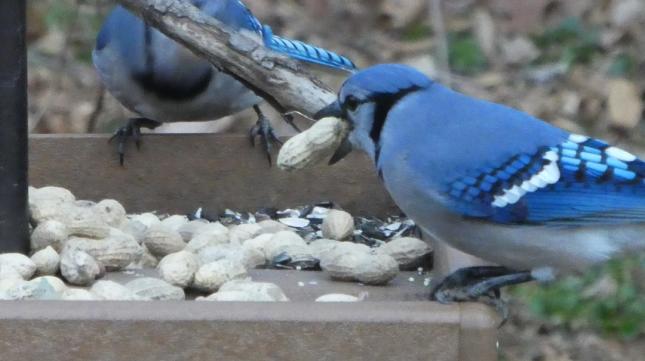Where Are Your Birds?


Missing Something? Where Are the Birds?
Does it feel like you’re watching an episode of the Outer Limits out your window? There is nothing wrong with your bird food or bird feeder. No attempts at altering your feeder setup or cleaning your feeders have brought the birds back. Something is causing the seed to be eaten very slowly and you don't know why the suet sits untouched. You can worry and fidget about where your birds are but only Mother Nature knows when they’ll return. You see Mother Nature controls everything. She blows away the clouds for the sun to shine through, she makes it rain, and she provides the natural foods birds need. This autumn, Mother Nature seems to have out done herself. She’s provided enough seeds, fruit, nuts, and insects so the birds don’t require the fare you’re offering as much. Her cosmological, ecological, and meteorological attributes will also determine when the birds will return to your feeders. Approaching storm fronts, dwindling daylight, colder temperatures, and over time the lessening of natural foods will all contribute to the return of the regularly scheduled activity of your birds. There’s no knobs on your window. You can’t alter a thing outside. Mother Nature controls all you see and hear in your backyard.
I don’t watch TV. I watch the birds. And when they’re not at the feeders I don’t fret. I switch my channel and go for a walk. I feel like a character in an episode of the Outer Limits. Whereas, I was sitting contently inside looking out at the scenery through my picture tube of a window, now I'm actively part of this beautiful Autumn day. Get Outside.
From time to time, you may notice a lack of birds at your feeders. It is sometimes hard to tell why we see fewer birds at our feeders, but there are a few possible explanations, including:
• changes in birds' seasonal movements and food preferences
• an abundance of natural food sources; this often happens in late summer / early fall. When natural food supplies are abundant, wild birds will take advantage of these sources, often to the exclusion of the foods we offer them in our feeders. Studies have shown that wild birds still rely on natural foods for about 80% of their diet when bird feeders are present.
• sudden extremes in weather
• a recent loss of some area of local habitat
• a neighbor putting out new bird feeders
• a hawk, cat or other predator taking up residence in the neighborhood
• problems with a feeder or food
The birds will return to your feeders. In the meantime, here are a few tips you might want to consider to increase the number of birds in your yard.
• Keep feeders clean and filled with fresh food.
• Provide different types of bird feeders, offering a variety of foods.
• Install multiple bird feeding stations so there are not too many feeders in one location. Birds like elbow-room, too.
• Install a bird bath. Birds need a dependable year-round water source for drinking and bathing.
• Birds need to feel safe when feeding. Provide protective cover, such as special plantings, hollow logs, and brush piles.
• Offer places to raise young. With more and more destruction of the natural habitat, many birds are having trouble finding places to nest.
Visit the store or call us to learn more about how to bring the birds back to your yard.
Happy Birding, Charles Shattuck
Love your Birds, Love your Cat: Keep your Cat Inside

